LE ROUGE FRANÇAIS develops proprietary and patented formulas, reaching a level of naturalness well beyond the minimum required by the BIO certification. With a choice of ingredients concentrating a high level of active ingredients, present even in the composition of its plant pigments.
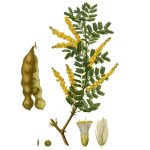
Acacia senegal (L.) Wild
Acacia gum, rich in polysaccharides and glycoproteins, is a real “tensor” and lifting cosmetic active ingredient. ln addition to its firming properties, it is filmogenic and protects the skin from dehydration.

Acacia senegal (L.) Wild
La gomme d’Acacia, riche en polysaccharides et en glycoprotéines est un véritable actif cosmétique “tenseur” et liftant. En plus de ses propriétés raffermissantes elle est filmogène, protégeant la peau de la déshydratation.
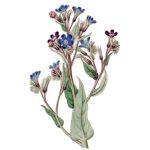
Alkanet root
The alkanet is a tinctorial plant, whose vegetable powder brings mahogany reflections, warm reflections and purple tones.
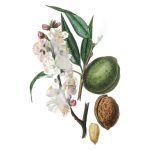
Amygdalus communis
Sweet almond oil is extracted from the almond, the fruit of the almond tree. It is an oil that is rich in vitamins, minerals and omega-6 and 9 fatty acids.

Amygdalus communis
L’huile d’amande douce est extraite de l’amandon, le fruit de l’amandier. C’est une huile riche en vitamines, en minéraux et en acides gras de type oméga-6 et 9.
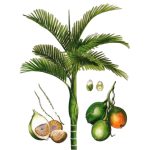
Argania spinosa
Argan oil is native to Morocco. It is coveted for its richness in Vitamin E and unsaponifiable matter. Argan oil is known for its nourishing, regenerating and restructuring properties.

Argania spinosa
L’huile d’argan est originaire du Maroc. Elle est convoitée pour ses richesses en vitamine E et en insaponifiables. elle est réputée pour ses propriétés nourrissantes, régénérantes et restructurantes.
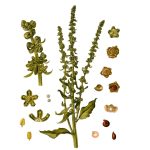
Beta vulgaris L.
Red beet is rich in betacyanins, pigments of red to purple color. They are also excellent antioxidants that protect against skin aging.

Beta vulgaris L.
La Betterave rouge est riche en bétacyanines, pigments de couleur rouge à violet. Ce sont également d’excellents antioxydants qui vont protéger du vieillissement cutané.
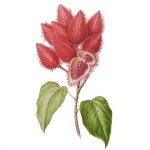
Bixa orellana L.
Plante sacrée pour beaucoup de civilisations amazoniennes, le Roucou est utilisé comme peinture corporelle. Le principe tinctorial est la bixine, molécule conférent aux graines de Roucou une couleur rouge.

Bixa orellana L.
Sacred plant for many Amazonian civilizations, the Roucou is still used as body paint. Its dyeing principle is bixin, a molecule that gives the seeds of Roucou a red color.
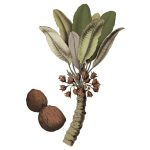
Butyrospermum parkii
Derived from the nuts of an emblematic tree of the West African savannahs, shea butter has been used for centuries by local populations. Its nourishing, moisturizing and protective properties make it a must in our formulations.

Butyrospermum parkii
Issu des noix d’un arbre emblématique des savanes ouest-africaines, le beurre de Karité est utilisé depuis des siècles par les populations locales. Ses propriétés nourrissantes, hydratantes et protectrices en font un incontournable de nos formulations.
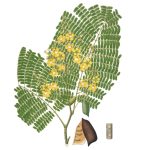
Caesalpinia sappan L.
Le Bois de Sappan fait partie de la famille des bois rouges. Originaire des régions d’Asie, il est utilisé depuis des millénaires pour la teinture de tissus d’un rouge profond.

Caesalpinia sappan L.
Sappan wood is a member of the redwood family. Native to the regions of Asia, it has been used for thousands of years to dye fabrics from its deep red natural colour.
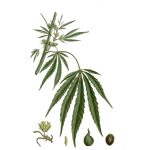
Cannabis sativa L.
L’huile de chanvre extraite du cannabis sativa est riche en oméga 3 et en oméga 6. Appliqués sur la peau, ces acides gras lui redonnent de l’élasticité en renouvelant son film hydrolipidique, tout en apaisant les irritations et rougeurs.

Cannabis sativa L.
Hemp oil extracted from cannabis sativa is rich in omega 3 and omega 6. Applied to the skin, these fatty acids restore its elasticity by renewing the hydrolipidic film, while soothing tle irritation and redness.
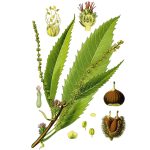
Castanea sativa Mill
Chestnut bark offers a magnificent brown-beige pigment. It is from the 19th century, that chestnuts bark tannins have started being used for tanning and for other dyeing purposes.

Castanea sativa Mill
L’écorce de Châtaignier offre un magnifique pigment brun-beige. C’est à partir du XIXe siècle, que l’intérêt pour cet arbre riche en tanins se développa pour le tannage et pour la teinture.
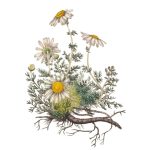
Chamaemelum
Chamomile hydrosol is known to relieve, revitalize and purify the skin. Chamomile is rich in flavonoids, whose active ingredients calm irritations thanks to its natural anti-inflammatory, antiseptic and anti-bacterial properties.

Chamaemelum
L’hydrolat de camomille est connu pour soulager, revitaliser et purifier la peau. La camomille est riche en flavonoïdes, dont les actifs aux propriétés antiinflammatoires, antiseptiques et antibactériennes, calment les irritations.
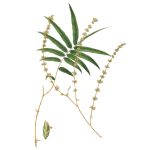
Charcoal
Activated charcoal is obtained by burning branches, shoots and roots of bamboo. It is a vegetable black pigment with detoxifying properties.
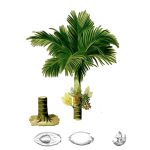
Cocos nucifera L.
Also known as Coconut Butter, this oil is a very popular ingredient for its protective, softening and emollient properties on the skin.

Cocos nucifera L.
Également appelée Beurre de Coco, cette huile est un ingrédient très apprécié pour ses propriétés protectrices, adoucissantes et émollientes sur la peau.
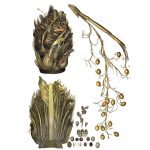
Copernicia prunifera
Carnauba wax is secreted by the leaves of an endemic palm tree in Brazil. It thickens the balms or emulsions and increases their film-forming power.

Copernicia prunifera
La cire de carnauba est sécrétée par les feuilles d’un palmier endémique du Brésil. Elle épaissi les les baumes ou les émulsions et augmente leur pouvoir filmogène.
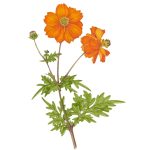
Cosmos sulphureus Cav.
Native to Latin America, Cosmos was used by pre-Columbian civilizations as a source of yellow and orange dyes. The flowers of Cosmos are edible.

Cosmos sulphureus Cav.
Originaire d’Amérique latine, le Cosmos était utilisé par les civilisations précolombiennes comme source de teintures jaune et orangée. Les fleurs de Cosmos sont comestibles.
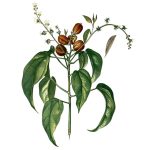
Croton lechleri Müll. Arg.
Depuis l’Antiquité, cette résine de couleur rouge-sang était aussi bien utilisée en médecine qu’en tant que colorant. Cette résine possède également des propriétés cicatrisantes et antioxydantes.

Croton lechleri Müll. Arg.
Since ancient times, this blood-red resin was used both in medicine and as a dye. Its resin is known for its healing and antioxidant properties.
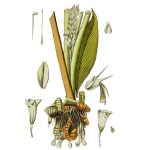
Curcuma longa L.
Profondément encré dans la civilisation hindoue, le Curcuma est utilisé dans la teinture textile, la peinture corporelle mais aussi comme condiment et médicament. Les racines séchées et réduites en poudre offrent un magnifique jaune d’or.

Curcuma longa L.
Deeply rooted in Hindu civilization, turmeric is used in textile dyeing, body painting but also as a condiment and medicine. The dried and powdered roots release a beautiful golden yellow colour.

Euphorbia cerifera Alcocer
Candelilla wax is secreted by the leaves of a shrub native to Mexico. This wax has an excellent film-forming power, protecting and repairing lips and damaged skin.

Euphorbia cerifera Alcocer
La cire de Candelilla est sécrétée par les feuilles d’un arbuste originaire du Mexique. Cette cire possède un excellent pouvoir filmogène, protégeant et réparant les lèvres et peaux abîmées
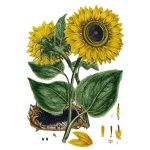
Helianthus annuus L.
The sunflower oil is very rich in vitamin E and omega 6. It is also used to make oily macerates of mixed flowers.

Helianthus annuus L.
L’huile de tournesol est très riche en vitamine E et en oméga 6. Elle sert également à la macération de fleurs et de plantes pour réaliser des macérâts huileux.
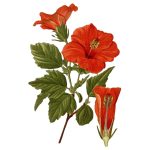
Hibiscus rosa-sinensis L.
Le jus des pétales et des fleurs d’Hibiscus servaient comme colorant, en Chine et en Inde, pour noircir les sourcils et les cheveux. Fleur nationale de Malaisie, l’Hibiscus est encore utilisée dans la médecine traditionnelle malaisienne.

Hibiscus rosa-sinensis L.
The juice of the petals and flowers of hibiscus was used as a dye, in China and India, to blacken eyebrows and hair. Now national flower of Malaysia, the hibiscus is still used in traditional malaysian medicine.
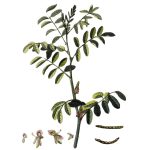
Indigofera tinctoria L.
Les feuilles d’Indigotier contiennent une molécule précurseur de l’indigo, l’indican. Les couleurs obtenues en coloration végétale vont du noir à un bleu clair, appelé bleu “oeil de corbeau”.

Indigofera tinctoria L.
Indigo leaves contain a precursor molecule of indigo, the indican. The colors obtained in vegetable dyeing go from black to a light blue, called “crow’s eye” blue.
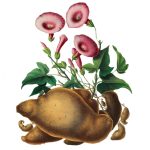
Ipomoea batatas (L.) Lam.
The purple sweet potato is rich in anthocyanins which give it its purple color.

Ipomoea batatas (L.) Lam.
La Patate douce pourpre est riche en anthocyanines qui lui confèrent sa couleur violette.
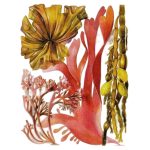
Lithothamnion calcareum
Small red sedimentary algae has an alkaline pH with anti-acid actions by participating in the acid-base balance. It is rich in calcium and other minerals.

Lithothamnion calcareum
Petite algue rouge sédimentaire, elle possède un pH alcalin lui permettant d’agir comme un anti-acide en participant à l’équilibre acido-basique. Elle est riche en calcium et autres minéraux et oligo-éléments.
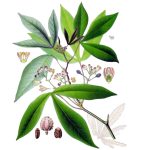
Manihot esculenta
Tapioca starch is coming from the root of the cassava plant. Its powder helps to absorb perspiration, without interfering with the natural process of sweating.

Manihot esculenta
L’amidon de tapioca est une substance d’origine végétale issue de la racine du manioc. Sa poudre aide à absorber la transpiration, sans interférer avec le processus naturel de sudation.
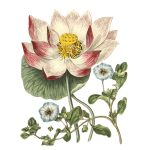
Nelumbo nucifera Gaertn.
Fleur sacrée des religions orientales, le Lotus sacré est le symbole de l’élégance et de la pureté. Les fleurs réduites en poudre donnent un pigment beige rosé.

Nelumbo nucifera Gaertn.
Sacred flower of the oriental religions, the lotus is the symbol of elegance and purity. The powdered flowers give a pinkish beige pigment.
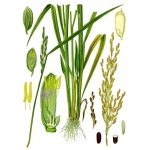
Oryza sativa L.
La cire de riz est une cire végétale obtenue à partir de de l’enveloppe qui entoure le grain de riz : le son. C’est un excellent substitut aux cires animales.

Oryza sativa L.
Rice wax is a vegetable wax obtained from the envelope that surrounds the rice grain: the bran. It is an excellent substitute for animal waxes so to guarantee our vegan formulation.

Poudre de charbon de bambou
Le Charbon actif est obtenu par combustion des branches, pousses et racines de bambou. C’est un pigment noir végétal aux propriétés détoxifiantes.
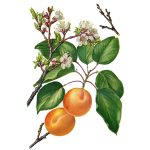
Prunus armeniaca L.
L’huile de noyau d’abricot possède d’infinies vertus. Elle porte des propriétés revitalisantes et régénérantes, anti-âges et antioxydantes. Cette huile permet ainsi de lutter efficacement contre le vieillissement cutané en favorisant le renouvellement cellulaire.

Prunus armeniaca L.
Apricot kernel oil has infinite virtues, including revitalizing, regenerating and antioxidant properties. This oil has all the benefits to fight effectively against cutaneous ageing by supporting the cellular renewal.

Racine d’orcanette
L’orcanette est une plante tinctoriale, dont la poudre végétale apporte des reflets acajou, des reflets chauds et des tons violines.
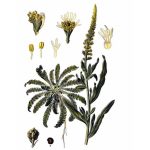
Reseda luteola L.
Utilisée depuis des millénaires, la Gaude donne un pigment jaune pâle. Elle est la principale source de teintes jaunes, oranges et verts pour les teinturiers égyptiens du Ier au Xème siècle.

Reseda luteola L.
Used for thousands of years, Gaude gives a pale yellow pigment. It used to be the main source of yellow, orange and green dyes for the Egyptian dyers from the 1st to the 10th century.
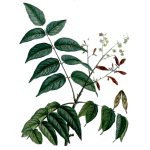
Rhus semialata Murray
Les galles récoltées sur le Sumac de Chine (Rhus semialata) sont riche en gallotanins. Réduites en poudre, les galles donnent un beau beige.

Rhus semialata Murray
The galls harvested from the Chinese Sumac (Rhus semialata) are rich in gallotanins. Reduced to powder, the galls give a nice beige color.
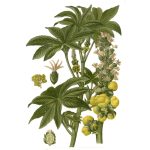
Ricinus communis L.
The castor is a shrub with imposing leaves, whose seeds offer by cold pressure process, an excellent vegetable oil to nourish and strengthen the hair, the lashes and the eyebrows.

Ricinus communis L.
D’origine tropicale, le ricin est un arbrisseau aux imposantes feuilles et dont les graines offrent par pression à froid, une huile végétale de grande qualité pour nourrir et renforcer les cheveux, les cils et les sourcils.
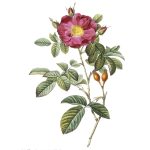
Rosa x damascena Mill.
La rose de Damas est vénérée depuis l’antiquité, elle représentante de l’icône de la femme et de la féminité. Les fleurs réduites en poudre donnent un pigment rose poudré aux propriétés biologiques apaisante et tonifiante.

Rosa x damascena Mill.
The Damask rose has been revered since antiquity, representing the icon of womanhood and femininity. The powdered flowers give a powdery Pink pigment with soothing and invigorating biological properties.
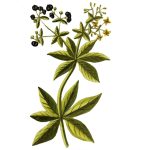
Rubia tinctorum L.
Madder has been used for thousands of years, since the time of ancient Egypt, Rome and Greece. The roots contain a multitude of dyeing principles now used into our vegetal color extraction processes.

Rubia tinctorum L.
L’utilisation de la Garance rouge est millénaire, du temps de l’Égypte ancienne, de la Rome et Grèce Antique. Les racines contiennent une multitude de principes tinctoriaux.
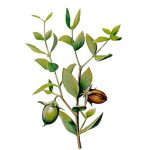
Simmondsia chinensis
Produced from jojoba seed oil, this wax is known for its moisturizing and softening effectiveness, which gives a soft and pleasant feel to the skin upon application.

Simmondsia chinensis
Produit à partir de l’huile des graines du jojoba, on reconnait à cette cire son efficacité hydratante et adoucissante, qui confère un toucher doux et agréable sur la peau dès l’application.
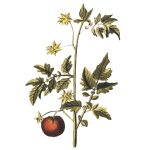
Solanum lycopersicum L.
The highest concentration of lycopene is found in tomatoes. ln addition to its beautiful orange-red color, lycopene is an excellent antioxidant.

Solanum lycopersicum L.
C’est dans la tomate que l’on retrouve la plus haute concentration de lycopène. En plus de sa magnifique couleur rouge orangé, le lycopène est un excellent antioxydant.
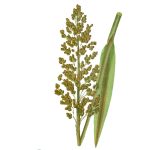
Sorghum bicolor (L.)
Le colorant issu des gaines enveloppant la tige était utilisé pour la teinture du cuir, du coton et des herbes de joncs. Mais également comme peinture corporelle, pour teinter les calebasses et les masques dans le sud du Bénin et du Nigeria.

Sorghum bicolor (L.)
The dye from the sheaths surrounding the stem was used to dye leather, cotton and rushes, but also as body paint, to dye gourds and masks in southem Benin and Nigeria.
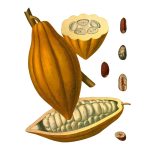
Theobroma cacao L.
Le beurre végétal de cacao est reconnu pour ses propriétés anti-oxydantes, luttant contre l’accélération du vieillissement des cellules de la peau.

Theobroma cacao L.
The vegetable cocoa butter is known for its anti-oxidant properties, fighting against the acceleration of the aging of the skin cells.
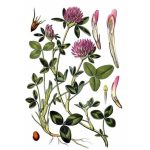
Trifolium
Red Clover is a perennial herb from Central Europe that grows on irrigated or rocky limestone soils. Its ingredients accelerate the formation of proteins from the extracellular matrix, boosting the size and anchoring of the hair follicle.

Trifolium
Le Trèfle rouge est une herbe vivace d’Europe Centrale qui pousse sur des sols calcaires irrigués ou rocheux. Ses composantes favorisent la formation de protéines à partir de la matrice extracellulaire, boostant la taille et l’ancrage du follicule pileux.
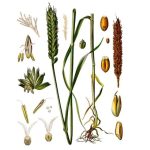
Triticum
Cultivée depuis des millénaires, l’huile vierge de germes de blé est utilisée pour sa richesse en Omega-6, en vitamines et en caroténoïdes. Elle participe à préserver du vieillissement cutané et protéger l’élasticité naturelle de la peau.

Triticum
Cultivated for thousands of years, virgin wheat germ oil is used for its richness in Omega-6, vitamins and carotenoids. It helps to preserve skin aging and protect the natural elasticity of the skin.


